Old-School Cafeteria Foods We Wish Would Make A Comeback
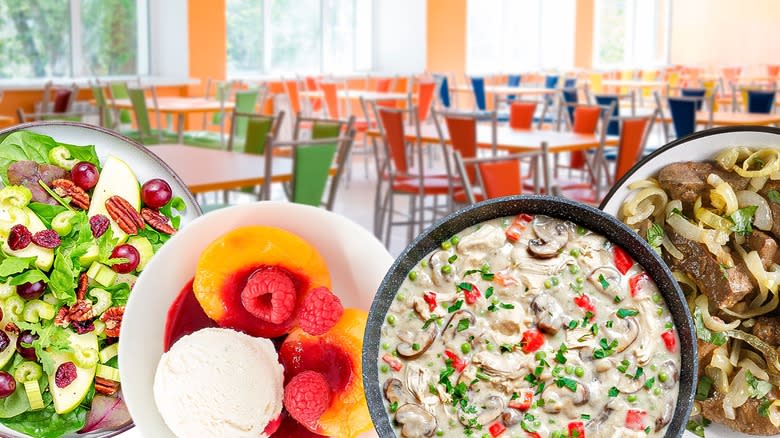
Even though many new food trends are on point, sometimes we long for the cafeteria food of yesteryear to make a comeback. When we're feeling nostalgic for one of these comforting meals, we can always try our hand at making them in the kitchen. However, part of what made those dishes great was the cafeteria experience, with so many choices at our fingertips.
We've pored over ads and menus from old-school cafeterias, uncovering quite a few retro dishes that struck our fancy or jogged our memory. Most of these retro dishes aren't completely extinct, as you can still find some of them regionally, in a handful of restaurants, or on menus in a few remaining cafeteria-style restaurants in the U.S. However, we'd like to see them make a mainstream comeback. Luckily, the internet is full of recipes, and we also found that former employees from many of these cafeterias have leaked the original recipes online.
Read more: The Best All-You-Can-Eat Buffets In Every State
Chicken A La King

One old-school menu item we'd love to see make a comeback is chicken a la king. It's a creamy comfort food that you rarely see in restaurants. The dish features chicken chunks in a creamy mushroom sauce with green peas and pimentos, served over something carb-y like rice or egg noodles.
The dish has four different potential origins. A Philadelphia version says it was invented at the Bellevue Hotel by chef William King in 1895. In another theory, it got its start at the Brighton Beach Hotel in New York City, which was owned by Clark King II and his wife. Another story has it being invented by customer Foxhall P. Keene at Delmonico's in New York City in the 1880s. Meanwhile, the London story attributes it to Foxhall P. Keene's father, James R. Keene, at Claridge's. Regardless of its true origin, it was on hundreds of menus for decades. Now, it seems relegated to the frozen food section of the grocery store, if you see it at all. We found chicken a la king on a Blue Boar cafeteria menu in 1950, where it was served atop toasted bread. It was special enough that you could get it only on Sunday nights.
Liver And Onions
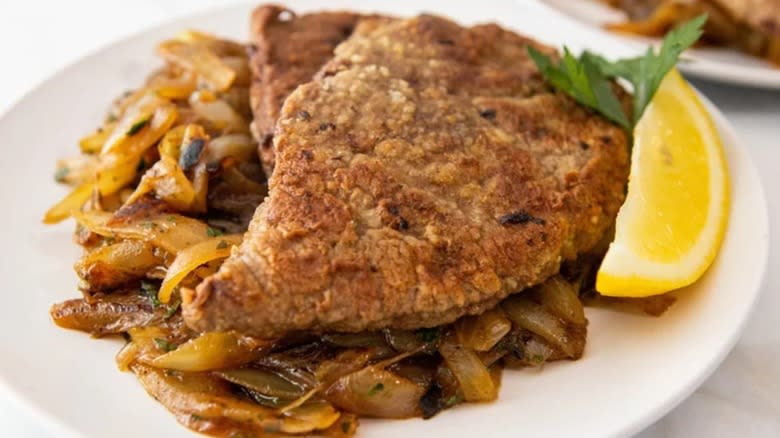
At one time, liver and onions was everywhere, including cafeteria menus. While you might still see it in some Southern restaurants, it's not nearly as mainstream now. Pan-fried liver with caramelized onions (and sometimes gravy) is a whole meal when served over rice.
It needs a comeback largely because liver is packed with lots of nutrients, including 2,917% of the daily value (DV) of vitamin B12, 1,578% of the DV of copper, 261% of the DV of riboflavin, and 104% of vitamin A. It also has easily absorbed heme iron. While it has too much vitamin A for pregnant people and too much uric acid for gout sufferers, it's extremely nutritious otherwise.
At one point, it was available all over. It was the Monday special at Piccadilly Cafeteria in 1977, the Tuesday special at Morrison's Cafeteria, and the Saturday special at Wyatt's Cafeteria in 1972 (with a side of macaroni and cheese). You could also order it any time at Furr's Cafeteria in 1988 and the Kmart Family Cafeteria in 1977 (with mashed potatoes, vegetables, and a roll). Luckily, you can still get it at one of the few remaining Morrison's or Piccadilly's.
Chopped Steak
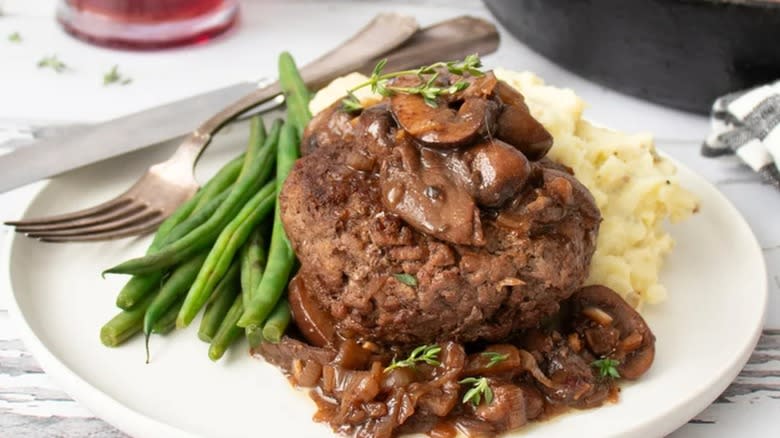
Chopped steak is another comfort cafeteria food we think deserves a return to menus. At its most basic level, it's a juicy hamburger patty covered in brown gravy. However, there are variations.
During the U.S. Civil War, Dr. Salisbury prescribed hamburger patties, which he called Salisbury steak, to malnourished soldiers and those with stomach problems. It was only later that it came with gravy. Today, you're most likely to find lackluster versions in the grocery store freezer section labeled as Salisbury steak, or you can make chopped steak at home.
Morrison's had chopped steak on the menu as a Thursday special with country rice. Now, Morrison's chopped steak comes with two sides and bread. The original one was baked and covered in Morrison's special "Steak Sauce" — a mixture of oil, margarine, and au jus. Morrison's also had another version that included a bacon-wrapped baked hamburger patty smothered in mushroom onion gravy.
Apple Dumplings
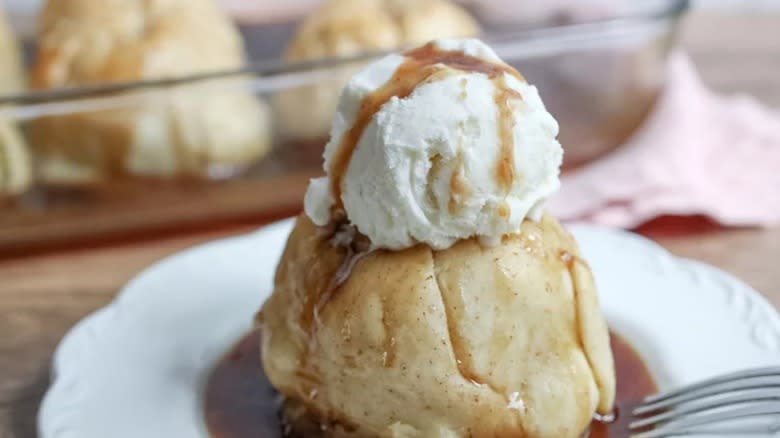
It's rare to find apple dumplings outside of an apple festival or perhaps your grandma's kitchen (unless you live in Pennsylvania Dutch Country). However, at one time, they showed up regularly on cafeteria menus. Making this dessert involves wrapping a whole apple in dough and baking it until the apple is soft and the dough is golden.
The first record we have of anyone enclosing their apple in dough to make a dumpling is from 18th-century England. Some variations include coring the apple and stuffing it with nuts and dried fruits before baking, and pouring spiced butter sauce over the uncooked dough. While they're most common as a dessert, you might find them as a breakfast food in Pennsylvania, served with milk poured over them.
Cafeteria Lunch on Broad Street in New York served them for dessert in 1900, as did Wyatt's Cafeteria in 1980, and Morrison's Cafeteria. Morrison's apples were coated in sugar, cinnamon, and nutmeg. Before baking, the chef poured a sugary and buttery cinnamon and nutmeg syrup over them, too.
Waldorf Salad
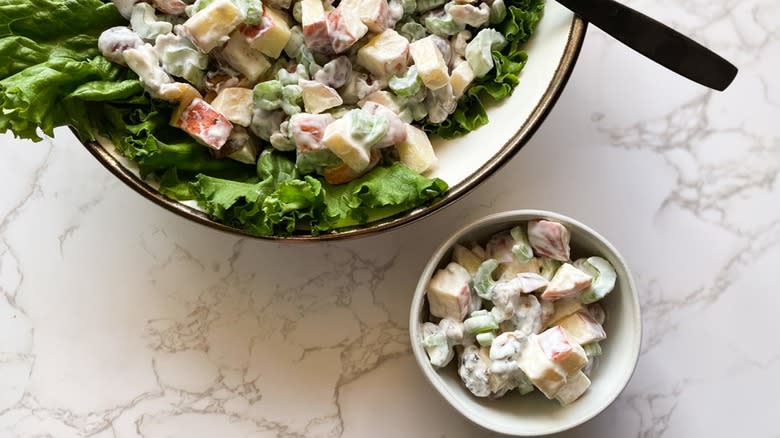
Waldorf salads are not something you often see in the wild anymore. The original version called for apples, celery, mayo, and lettuce, but different chefs and home cooks have added twists, ranging from bleu cheese and walnuts to grapes or even yogurt instead of mayo.
Swiss immigrant Oscar Tschirky created the first Waldorf salad in the kitchens of the Waldorf Hotel in 1893. It was first served the day after the hotel opened at a charity ball for St. Mary's Hospital for Children. The original salad included a layer of mayo-infused celery and apples, covered with a layer of torn lettuce leaves, and finally topped with sliced apples. Even though the hotel closed for renovations in 2017, we hope the salad will continue popping up for years to come.
Cafeterias liked to serve Waldorf salads back in the day. Morrison's had one that added raisins to the base of mayo, celery, and apples. However, you could sometimes find a deluxe version with walnuts or pecans. Another cafeteria that used to serve Waldorf salads was K&W Restaurant in 1937.
Fish Almondine
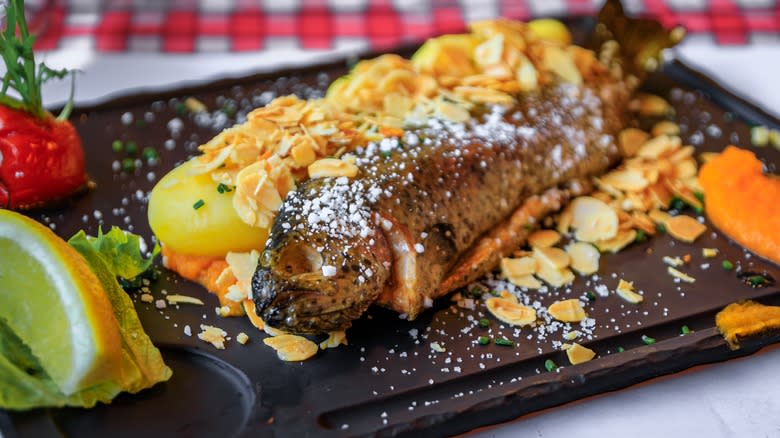
One dish we once looked forward to finding in cafeterias was fish almondine. While you may still occasionally find it in seafood restaurants, it's sadly not as prevalent as it once was. We'd love to see it make a comeback. In French, "almondine" simply means "with almonds," and a variety of fish from trout to mackerel have been used in almondine dishes.
There were several versions available from different cafeterias. The one we remember came from Luby's, where the chefs baked flour-coated haddock that had been covered with mayonnaise, breadcrumbs, and almonds. At Morrison's, the fish almondine was fried instead of baked. It was dipped first in flour, then in a mixture of eggs, milk, and almond extract, and finally in a mixture of crushed crackers with thinly sliced almonds before being fried. Fried versions often came with tartar sauce. The one at Morrison's included finely chopped cabbage.
Millionaire Pie And Billionaire Pie
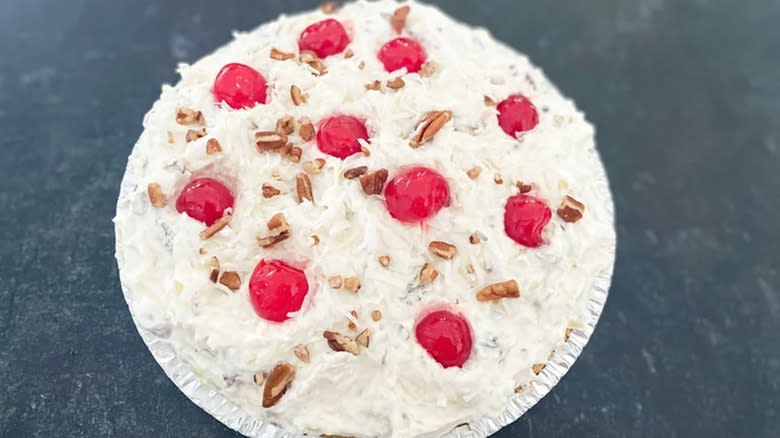
If you once frequented cafeterias, it's likely you encountered millionaire pies as dessert options. They're extremely simple to make since they require no baking. This Southern pie starts with a graham cracker crust and has a fluffy filling made from ingredients like Cool Whip and sweetened condensed milk, along with shredded coconut, crushed pineapple, and pecans. Billionaire pie gets an upgrade with maraschino cherries.
When refrigerators started becoming more common in U.S. kitchens between the 1930s and 1950s, recipe makers responded by creating desserts like icebox pies and icebox cakes to eliminate baking. Millionaire pies are icebox pies that likely originated in the South in the 1930s. A cafeteria where many people remember enjoying millionaire and billionaire pie is Furr's. There are lots of copycat recipes out there. With cherries inside instead of just on top, the pie's interior turns pink and becomes a billionaire pie.
Lyonnaise Potatoes
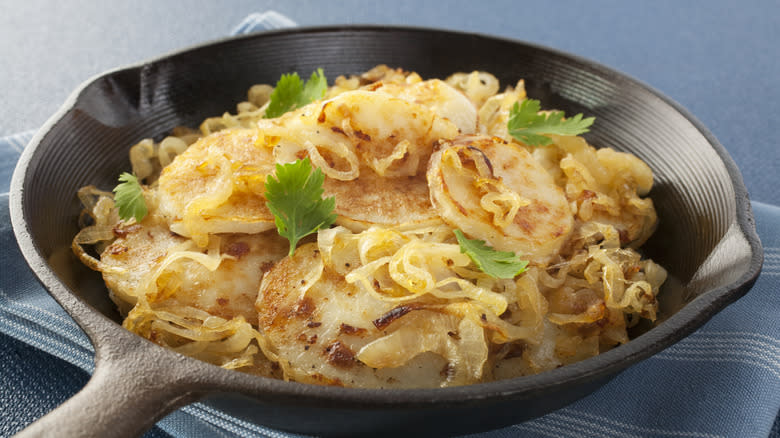
Lyonnaise potatoes are something you may have never seen before at a restaurant, but they were once a menu item you could find in your favorite cafeteria. The most likely place you might encounter them now is at a steakhouse, but these onion-covered potatoes are now pretty rare.
Any food that is labeled Lyonnaise is made in the style of food from Lyon, France. Generally, the term means that the dish contains onions. To make Lyonnaise potatoes, you sauté par-boiled potato rounds, add caramelized onions (and maybe garlic), and top the dish with parsley and butter. While it's similar to the idea of home fries with onions, caramelized onions add an extra layer of flavor.
The North Carolina cafeteria chain, K&W, had Lyonnaise potatoes on its menu back in the 1930s. It was one of the many vegetable dishes you could choose to accompany all your other courses.
Beef Lyonnaise
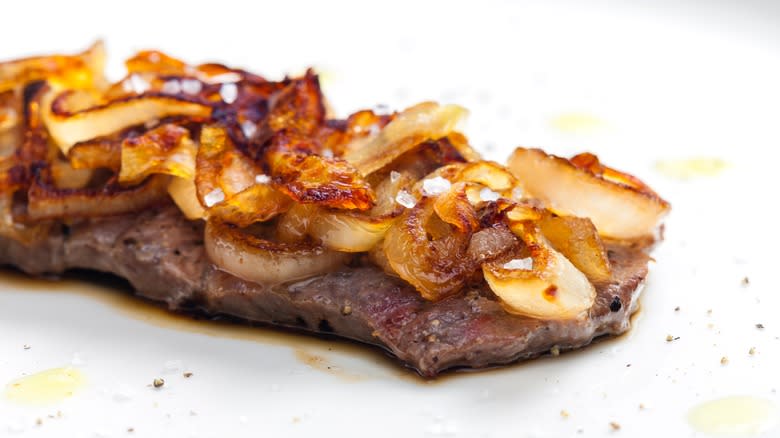
Another Lyonnaise cafeteria dish we'd like to see make a comeback is beef Lyonnaise — which is often referred to by its French name, entrecôte Lyonnaise — in which a cut of beef is topped with flavorful caramelized onions.
Entrecôte Lyonnaise is often served with Lyonnaise potatoes, and both the potatoes and the beef are likely cooked in liquids like wine, vinegar, and beef stock. Julia Child even has a beef Lyonnaise recipe in her "Mastering the Art of French Cooking" called bifteck haché à la Lyonnaise, which uses ground beef instead of a slice of beef.
One cafeteria where you could once find beef Lyonnaise was Morrison's. However, rather than starting with steak, Morrison's utilized leftover roast beef for its dish. The onions were simmered in margarine, garlic, bay leaves, and tomatoes before mixing them together with strips of roast beef and brown beef gravy to simmer further. Morrison's usually poured its beef Lyonnaise over a base of rice or buttered noodles.
Peach Melba
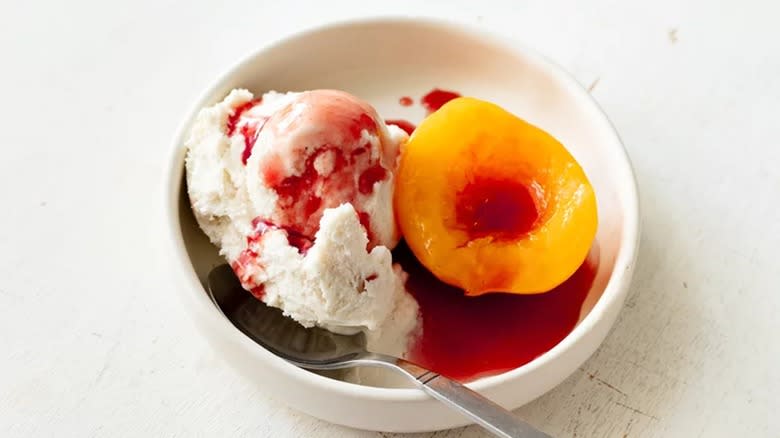
If you see the word "Melba" in a peach Melba dessert and imagine dry Melba toast, you're getting the wrong idea. While the two foods were named after the same person, peach Melba is a yummy dessert featuring vanilla ice cream, peaches, and raspberry sauce.
Peach Melba got its name from Australian opera singer Nellie Melba. French chef Auguste Escoffier named the dish for her when she was staying at the Savoy Hotel where he worked. He served the first one to her without raspberry sauce in a silver dish on top of a carved ice swan (referencing her swan boat opera scene). He called this dish topped with spun sugar a pêche au cygne (peach swan). It was when he was working for the Ritz Carlton in London that Escoffier replaced the spun sugar with raspberry sauce and started calling the dish pêche Melba (peach Melba).
We found peach Melba on a menu from the K&W cafeteria in 1937. All the other desserts were items that we're no stranger to today, like assorted pies, cakes, sundaes, and banana splits. But the peach Melba was something special.
Prune Chiffon Pie
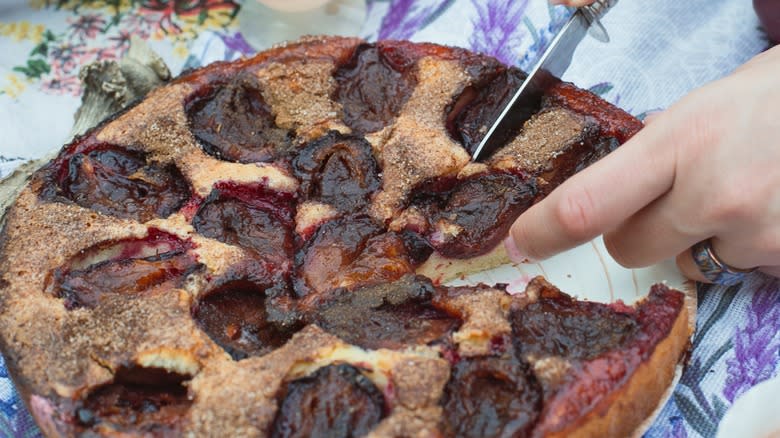
While prunes aren't something most of us cook with every day, they are quite tasty in desserts. We think prune chiffon pie is interesting enough to make a trendy comeback. The pie filling is a mixture of cornstarch-thickened and sugar-sweetened prune purée folded into a sweet and fluffy egg white mixture.
The Belgians who settled in Door County, Wisconsin, brought several prune dessert recipes with them when they immigrated following a harsh Belgian winter in the 1850s. One of these desserts was prune pie.
While you may have never heard of prune chiffon pie before, it was once a staple on several cafeteria menus. It appeared at places like Morrison's Cafeteria, Furr's, and the Forum Cafeteria. Even back in the heyday of prune chiffon pies, it was known as a dessert more popular with older people. However, plenty of younger people enjoyed it, too, once they gave it a try.
Charlotte Russe
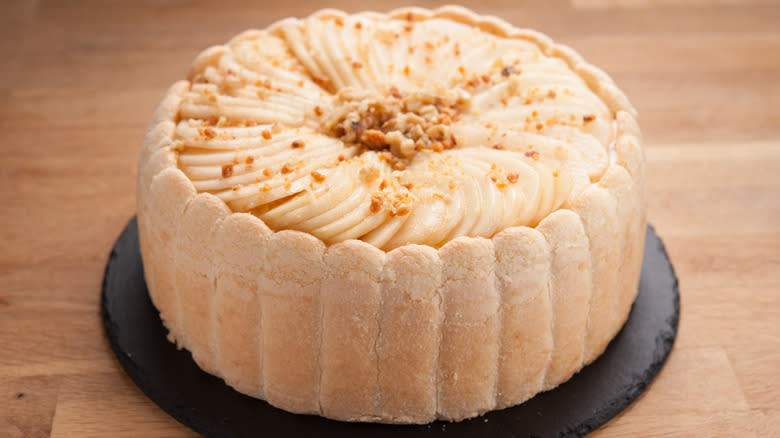
Charlotte Russe is another creamy icebox cake that deserves a comeback from its days on cafeteria menus. They were far more common from the 1930s to the 1950s than today. The original was Bavarian cream surrounded by ladyfingers. Later U.S. versions introduced a few changes, including liquor-brushed ladyfingers, a gelatin-firmed mousse filling, and toppings that range from fresh fruit or jam to chocolate curls.
This delightful dessert was supposedly invented by French Chef Marie Antoine Carême for Russian Czar Alexander I. The "Russe" part of the name means "Russian," while the "Charlotte" part likely refers to the czar's sister-in-law, Queen Charlotte, who was British King George III's wife.
One place where you could order a Charlotte Russe cake in a cafeteria at the turn of the 20th century was at Cafeteria Lunch in New York. It was on the menu sandwiched between chocolate eclairs and apple sauce.
Molasses Pie
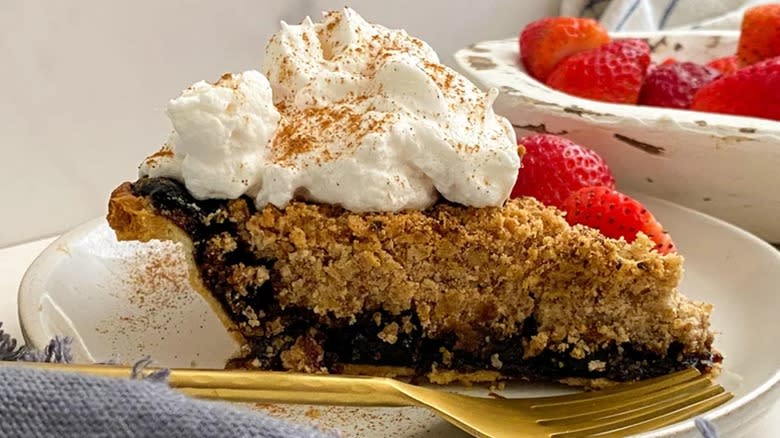
A wonderful pie that people once encountered in a cafeteria setting is molasses pie. Probably the only version you'll find these days is shoofly pie if you happen to be in Amish country. Molasses pie is as simple as it sounds, and we found it to be ridiculously delicious when we tried a homemade version recently. The pie crust filling is made with flour, sugar, molasses, water, and baking soda. Then, it's covered with a flour, sugar, and butter crumble.
Molasses pie and shoofly pie combined the ideas of treacle tart and molasses cake. Molasses cake (called "centennial cake") was created to celebrate the 100th anniversary of the Declaration of Independence in 1876. The pie became a poverty dish that home bakers could make in colder weather when hens weren't laying eggs, since they're not needed for this pie. We found molasses pie on the menu at Britling Cafeteria in 1926. The cafeteria also served other pies that we still commonly see today, like chocolate, strawberry, and cherry.
Swiss Steak
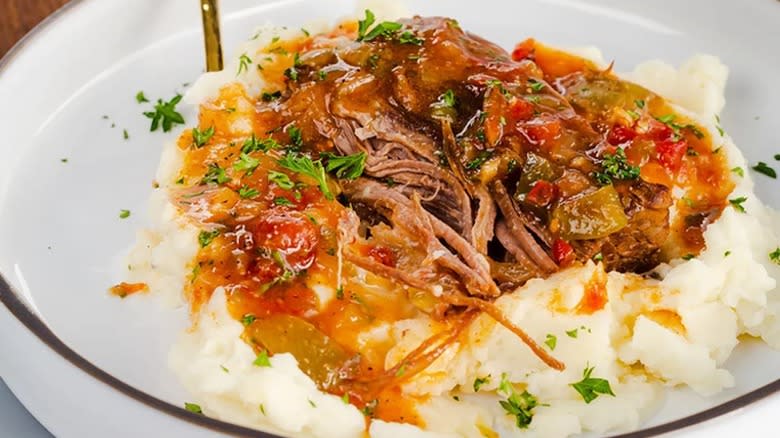
Swiss steak was a comfort-food dish from cafeterias that we'd love to see make a big comeback. To make it, you pound and flour a piece of tough meat, fry it, and then simmer it in water or beef stock for a little over an hour. This process creates its own gravy, and makes the meat nice and tender. Some cooks add garlic, bell pepper, and onions, while others add tomatoes or mushrooms. We've also enjoyed it with no vegetables at all.
While the first known written recipe for Swiss steak came from England in 1915, it first appeared in a U.S. cookbook in 1924. It became popular after World War II as a way to cook tougher, cheaper meat to make it softer. Wyatt's Cafeteria once served Swiss steak as a Sunday special. It was made with beef rounds and served over steamed rice. It's good alone or served over mashed potatoes.
Smothered Cabbage
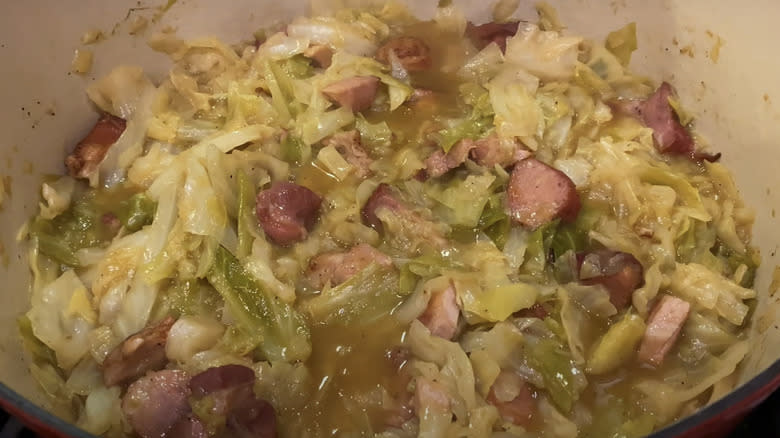
Another comforting cafeteria dish that we'd like to see make a comeback is smothered cabbage. It's a classic Southern dish that combines sautéed cabbage with a few other veggies and smoky meat for a nice, down-home flavor. All the extra ingredients make it more memorable and a step above ordinary cabbage side dishes.
In the South, smothered cabbage most often includes smoky pork like sausage or ham hocks, which add extra flavor to the dish. However, to be truly smothered, it needs veggies like onions and celery. Plus, it often has added seasonings like garlic and paprika. Some cooks even make it with Cajun seasonings.
Morrison's Cafeteria once had smothered cabbage on its menu. Its version involved seasoning the cabbage with salt, pepper, and oregano, while smothering it in onions, carrots, and smoked pork sausage. It works fine as a side dish or a main course served over rice.
Creamed Spinach
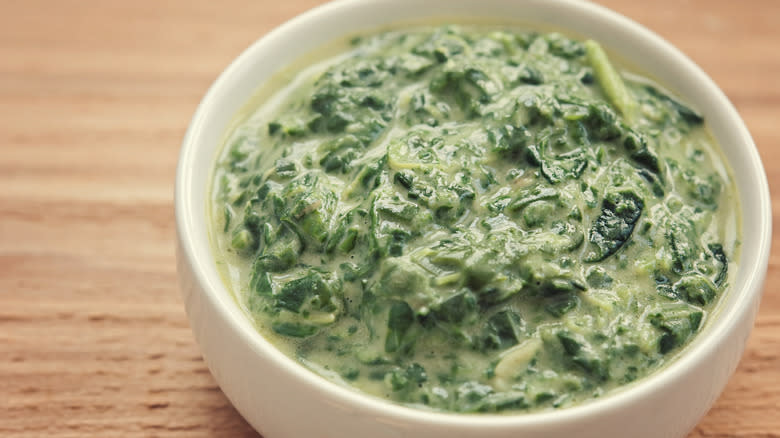
One beloved dish that people miss from the automat-style cafeteria is creamed spinach. This simple side dish combines chopped cooked spinach with a creamy sauce. We'd like to see it on regular restaurant menus more often so there are more spinach dishes available than just spinach artichoke dip.
Creamed spinach has its roots in Renaissance Europe. However, the cafeteria that many people associate with creamed spinach is the Horn & Hardart automat, which first opened in 1888. While it offered plenty of other menu items, many people remember the creamed spinach as a must-have. Unfortunately, the chain closed its last restaurant (in New York City) in 1991.
Horn & Hardart's creamed spinach included cooked chopped spinach mixed together with a béchamel sauce and seasoned with salt, white pepper, and sugar. Luckily, Horn & Hardart started the process of resurrecting its automat in 2023, so fans of the dish may one day get to experience it in a real automat again.
Read the original article on Mashed.

 Yahoo Lifestyle
Yahoo Lifestyle 
